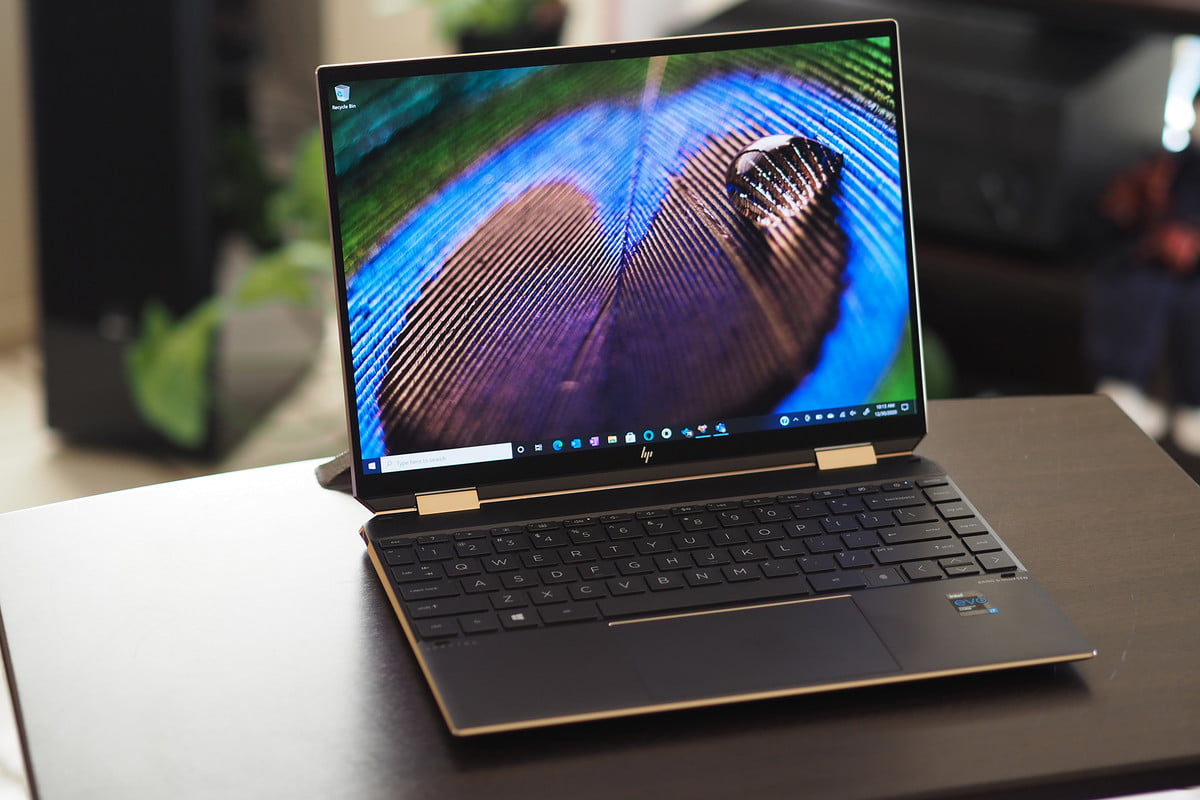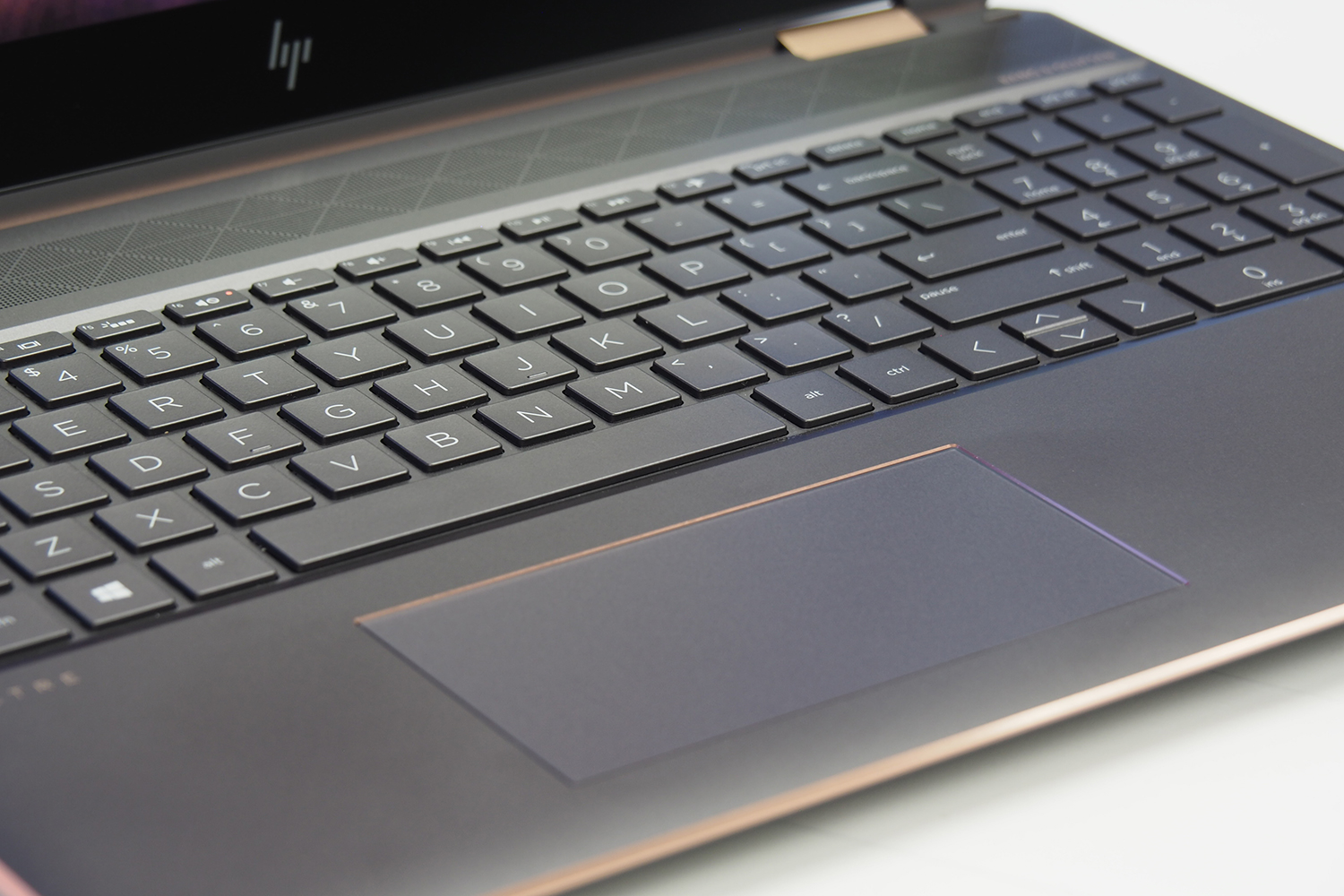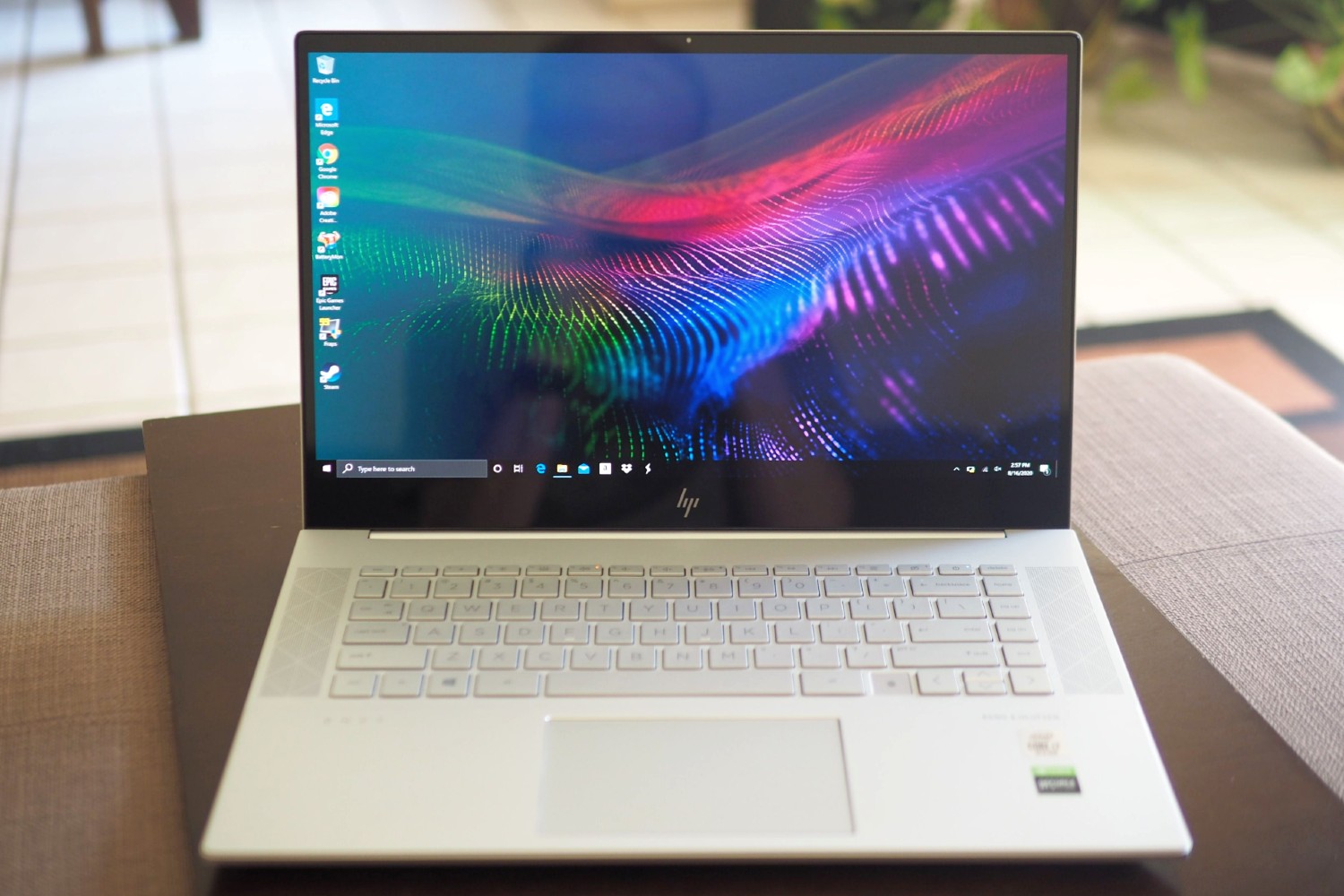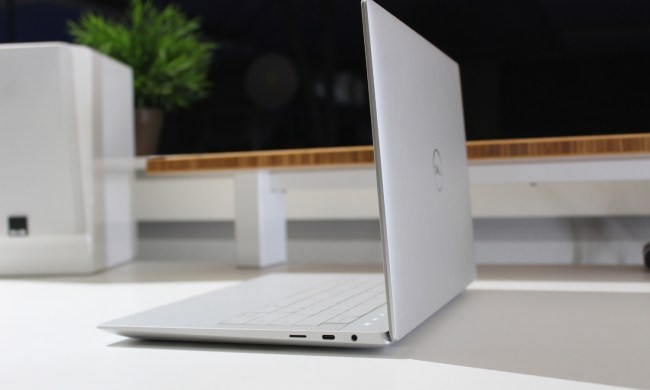HP produces a range of laptops ranging from budget machines in the Pavilion line all the way up to ZBook workstations. Planted in the middle are two lines, the Envy and Spectre, with the Envy starting at significantly lower prices (but not quite in the budget category) and the Spectre being squarely in premium territory. Some of the best laptops made today come out of these two lineups, such as the Envy 15 that’s on our best laptops for photo editing roundup, and the Spectre x360 14, that’s on several of our lists, including best 2-in-1s.
At one time, the HP Envy was considered a midrange laptop, while the Spectre was considered a higher-end machine. That’s changed, at least in terms of capabilities, with the Envy aimed at creators and the Spectre meant for discerning productivity users. What are the primary differences between the two? Read on to find out.
Design

The biggest design difference between the Envy and Spectre lines are their shape and size. While there have been clamshell Spectre machines in the past, all current Spectres are convertible 2-in-1s. They include the Spectre x360 13, the Spectre x360 14, and the Spectre x360 15. Each of these sport displays that swivel all the way around and include clamshell, tent, media, and tablet modes. The Envy line is more diverse, with a wider mix of clamshells and convertible 2-in-1s, and there are also more models. They range from the Envy x360 13 through the Envy x360 15 to the Envy 17, with the Envy 14 and Envy 15 being the most recent laptops finely tuned to meet the needs of creative professionals.
The next difference, albeit not as major, is in their build qualities. Both are all-metal, and both are at least reasonably rigid, but the Envy line is constructed of stamped aluminum. In contrast, the Spectre line enjoys unibody chassis via CNC machining processes. Generally speaking, Spectre laptops are more rock-solid, with zero bending, flexing, or creaking in their lids, keyboard decks, or chassis. Some Envy laptops are a step behind, with lids that can bend under pressure and keyboard decks that demonstrate some flex. You can’t really fault either lineup, but Spectre laptops are a cut above.
Both Envy and Spectre laptops are relatively thin and light, with neither lineup having a distinct advantage. The Spectre line tends to have smaller display bezels, so their chassis overall are smaller compared to similarly-sized Envy machines. The Spectre x360 13 is a prime example — it’s a tiny 13-inch 2-in-1 thanks to a 90% screen-to-body ratio. The Envy line has nothing that can match it. Both lines have models with taller displays, either 16:10 or 3:2, and so both are leveraging this recent industry trend for improved productivity.
Aesthetically, HP aims for a minimalist design with the Envy. Lines are simpler, angles are less extreme, and there’s little in the way of extra adornment. You can get Envy laptops in various colors, including black, silver, and gold, but overall, the line doesn’t try to stand out in a crowd. The Spectre line is the polar opposite. Available in three colors — silver, Poseidon Blue, and Ash Silver (more of a brownish color) — HP created a gem-cut design with the Spectre that has cutouts at the lead edge of the chassis and bottom of the display and chamfered edges in either a reddish or gold chrome that combine to present a distinctive look. It’s an elegant aesthetic and successfully walks the line between garish and gorgeous.
In terms of connectivity, the lines are again fairly equal. You’ll find USB-C ports with Thunderbolt 4 on Envy and Spectre laptops with 11th-gen Intel CPUs and Thunderbolt 3 ports with 10th-gen Intel H-series CPUs equipped on the Envy 15 and the Spectre x360 15. Both brands’ larger laptops have full-size HDMI ports, and virtually all the laptops have at least one USB-A port. SD card readers, both micro and full-size, are on various systems, and all HP laptops have 3.5mm audio jacks.
Finally, all Spectre laptops have both fingerprint readers and infrared cameras and facial recognition supporting the Windows 10 Hello password-less login. Envy laptops are limited to fingerprint readers, giving the Spectre line an edge. Spectres also have buttons or switches to turn off or block the webcam, while that feature hasn’t yet made it to all Envy machines.
All in all, the Spectre line is the better-built and better-looking line, while the Envy offers up a more industrial design that’s not quite as robust.
Keyboard and touchpad

Spectres have some of the best laptop keyboards you can buy, with excellent key size and spacing, plenty of travel, and a responsive scissor-switch mechanism that provides a clicky bottoming action that’s precise and comfortable. That’s the primary reason why the Spectre x360 14 is on our best laptops for writers list, and all Spectres share the same keyboard. Over the last couple of years, HP has migrated essentially the same keyboard down to the Envy line — if there’s a difference, it’s hard to tell. That means that recent Envy laptops also enjoy an excellent keyboard that ranks up there with the best.
Touchpads vary across laptops, with some Envy and Spectre machines having large versions that take up all the available space on the keyboard deck, and some suffering from smaller, often wide versions that could be larger. Generally speaking, more Envy laptops have larger touchpads, and so that line wins out here. All current HP touchpads support Microsoft Precision touchpad drivers, and so they’re all highly responsive and make effective use of Windows 10 multitouch gestures.
As 2-in-1s, all Spectre laptops have touch displays and support the HP active pen for Windows inking. The same is true of Envy 2-in-1s, while Envy clamshells typically have touch displays as an option.
Performance

The fastest HP consumer laptop you can buy today is the Envy 15, with a Core i7-10750H 45-watt, six-core/12-thread CPU and an Nvidia GeForce RTX 2060 GPU with Max-Q. Simply put, the Envy 15 is the best HP consumer machine you can buy if you’re a creative professional who needs to run demanding tasks like video editing. The Spectre x360 15 is next in line, available with the same CPU but a slower GeForce GTX 1650 Ti Max-Q GPU and a maximum of only 16GB of RAM. The rest of the Spectre line, including some configurations of the Spectre x360 15, uses 11th-gen Intel U-series CPUs and integrated Intel Iris Xe graphics.
The Envy lineup, however, includes several configurations that include AMD Ryzen CPUs and various discrete Nvidia GPUs. You can also configure the Envy 15 with up to 32GB of RAM, more than any Spectre, as well as dual PCIe solid-state drives (SSDs). Overall, the Envy line offers more performance than the Spectre, making it HP’s consumer-enthusiast stable of laptops. That includes gaming, where the Envy 15 is the one HP consumer laptop that can truly tackle today’s best titles. Besides the high-end Spectre x360 15, it’s best to think of the Spectre line as excellent productivity performers but not as content creation or gaming machines.
Display

HP offers a wide range of displays for both the Envy and Spectre lines. They’re available in 16:9, 16:10, and 3:2 aspect ratios, depending on the machine, and they include full HD (1920 x 1080), FHD+ (1920 x 1200), 3K (3000 x 2000), and 4K (3840 x 2160) resolutions. You’ll find both IPS and OLED displays on both lines as well, with a variety of quality characteristics.
We haven’t reviewed every Envy model and every HP display, and so we can’t attest to the quality of Envy versus Spectre IPS displays. In our experience, some Envy displays aren’t as bright as Spectre displays and don’t offer as much contrast, but they’re still good displays that meet the premium segment average. HP OLED displays, which you’ll find available on the Envy 15 and all Spectre machines, are excellent across the board, with lots of brightness, inky black contrast, and wide and accurate colors that would please the most demanding photo or video editor.
All we can say for sure is that you’re more likely to get a great display if you choose a Spectre or any machine with an OLED display. And you’re virtually guaranteed to avoid getting a bad display no matter which Envy or Spectre you buy.
Portability

You can buy both Envy and Spectre laptops that are small enough to slip into a backpack without weighing you down. As mentioned earlier, the Spectre x360 13 is the smallest of the bunch, but the Envy x360 13 isn’t a huge laptop by any means. You can also opt for the Envy 17, which is the largest in either lineup.
Battery life also varies by laptop within each line. For example, the Spectre x360 13 has a 61 watt-hour battery, while the similarly configured Envy x360 13 has a smaller 51 watt-hour battery. On the other hand, the Envy 15 uses 83 watt-hours of power, while the Spectre x360 15 has just 73 watt-hours. Accordingly, the Spectre x360 13 has a slightly longer battery life, as does the Envy 15.
Generally speaking, both Envy and Spectre laptops have the battery life to match their specifications. Machines with OLED displays have the shortest battery life, while those with full HD IPS displays have the longest. There’s no benefit between the lines in terms of battery life, but rather, you’ll get the best result by picking a laptop and configuring it accordingly.
Envy is for enthusiasts and creators, Spectre is for discerning productivity workers
The Envy line starts at around $700 (on sale), and you can spend as much as $1,600 (again, on sale). It borders on budget laptop territory at the low end and is firmly in premium territory at the high end.
The Spectre line entry level is around $1,100 (on sale), and it ramps up to over $1,900. It starts and ends as a premium laptop.
The bottom line is simple: If you’re an enthusiast or creative professional who wants the fastest laptop, then you’ll pick an Envy. If you’re more interested in elegance, excellent build quality, and solid productivity performance, then the Spectre line is for you.


